#ultrasonic level sensor
Explore tagged Tumblr posts
Text
Discover Accurate Water Level Monitoring with a Durable Water Level Staff Gauge
Require an accurate and budget-friendly way of measuring water levels? The Water Level Staff Gauge is the best bet! Built for its durability and fast readability, this gauge provides accurate readings for reservoirs, rivers, tanks, and canals. Its bold, clear markings ensure you exact measurements even in challenging conditions. It's your first choice when working with irrigation, flood control, or environmental monitoring. Simple to install and almost maintenance-free, it delivers lasting results at a reduced cost. Find out more about the water level staff gauge at Nikeson and make the most of your water management today!
#ultrasonic level sensor#Ultrasonic Level Transmitter#water level gauge#water level staff gauge#water tank level indicator#tank level staff gauge#tank level gauge#water tank gauge#level indicators for water tanks#rainwater level indicator#water level indicators for water tanks#level indicator water tank
0 notes
Text

0 notes
Text
youtube
Liquid Level Indicator Using ULN2003
A water level indicator detects and indicates the level of water in an overhead tank and relays the information back to a control panel to indicate whether the tank has a high or low water level. In this tutorial, I am going to use the ULN2003 IC to create a simple, inexpensive water level indicator. Using this circuit you can easily control the wastage of water and electricity. Watch this video, for detailed step by step instructions on how to build this circuit and to know how this circuit works. Towards the end of the video I will also discuss whether its really worth building this circuit.
3 notes
·
View notes
Text
How to test water well at home: a step-by-step guide for homeowners
If you buy a house with a well, sell a house with a well, or only maintain water supply on your property, it is important to test water testing. Changes in pollution, bacteria and well water level can affect water security and quality. In North Georgia well level testing , where many houses depend on the systems well, the test helps to ensure that your water remains clean and reliable.

This guide explains how to test water well at home and when renting a professional company that measures the water level well.
Why should you test your well water?
The testing of the well water helps to detect changes in harmful bacteria, chemicals and water levels. If you buy or sell a house well, water quality testing may be required so that the water can be secured. Regular testing also helps to identify problems such as high nitrate levels, heavy metals or ph subalances that can affect your health and plumbing work.
In the North Georgia, seasonal weather can affect the water level well, making periodic testing even more important.
Step-by-step guide to test water well at home
1. Determine what to test
At least bacteria (such as coliform and e. Coli), nitrates, pH levels and tests for water stiffness each year. If you notice changes in taste, smell or color, check sulfur, iron or manganese. If you buy or sell a house, a full water quality test (including heavy metals and pesticides) is recommended.
2. Select a test method
You can use a home test set for basic controls, but for more accurate results - especially in real estate transactions - a professional laboratory test is best. In Northern Georgia, there are some companies that specialize in well testing and extensive water analysis.
3. Collect a water sample properly
Use a clean, sterile container (often equipped with test sets). To avoid stable water, let the bottle run for a few minutes before filling. Avoid touching inside the container to prevent contamination.
4. Send sample or home test to a laboratory
If a laboratory is used, follow their instructions for shipping. For home test sets, compare your results with EPA security standards to determine if your water is safe or not.
5. Review the results and take action if necessary
If your water test is safe, continue the annual test. If you contribute, you can take corrective steps:
Bacterial pollution may require shock chlorination or a UV filtration system.
High nitrates or chemical levels may require a reverse osmosis filter.
If the water level is well low, contact a professional to assess the location of the well.
When should you say to a professional?
While home tests are useful, some situations require specialist help:
When buying or selling a house with a well (required full inspection).
If water pressure or quality suddenly changes (possible well -level problems).
For North Georgia testing at good level, especially during drought when the water level can fall.
A professional can examine good depth, inspect the pump and recommend a solution to ensure a stable water supply.
Well final suggestions for owners
Test your water at least once a year, and more often if you notice the change in quality. If you live in the North Georgia, you must monitor the water level well during dry seasons. Before buying or selling a house with a well, you must always get a professional inspection.
By being active, you can ensure safe, clean water for your home.
#portable ultrasonic level sensor#well depth gauge#selling a home with a well#well water level sensor#buying a home with a well
0 notes
Text
Ultrasonic Sensors: A Comprehensive Guide
Ultrasonic sensors are devices that use ultrasonic waves, which are sound waves with frequencies higher than the audible range for humans (typically above 20,000 hertz), for various applications.
These sensors operate on the principle of sending out ultrasonic waves and measuring the time it takes for the waves to bounce back after hitting an object. This information can then be used to determine the distance or presence of the object.
Ultrasonic Sensors Working Principle
The working principle of ultrasonic sensors is based on the transmission and reception of ultrasonic waves. Here’s a step-by-step explanation of how these sensors operate:
Generation of Ultrasonic Waves:
Ultrasonic sensors consist of a transducer, typically a piezoelectric crystal, that can convert electrical energy into ultrasonic waves. When an electrical voltage is applied to the crystal, it vibrates and generates ultrasonic waves in the frequency range beyond human hearing (typically above 20,000 hertz).
Wave Emission:
The ultrasonic sensor emits a short burst of ultrasonic waves into the surrounding environment. This burst of waves travels outward from the sensor.
Wave Propagation:
The ultrasonic waves move through the air until they encounter an object in their path. The waves continue to propagate until they hit a surface.
Reflection of Ultrasonic Waves:
When the ultrasonic waves strike an object, they are reflected back towards the sensor. The reflection occurs because the ultrasonic waves encounter a change in the medium (from air to the object’s surface), causing the waves to bounce back.
Reception of Reflected Waves:
The same transducer that emitted the ultrasonic waves now acts as a receiver. It detects the reflected waves returning from the object.
Time Measurement:
The sensor measures the time it takes for the ultrasonic waves to travel from the sensor to the object and back. This time measurement is crucial for determining the distance to the object.
Distance Calculation:
Using the known speed of sound in the air, which is approximately 343 meters per second (at room temperature), the sensor calculates the distance to the object. The formula for distance (D) is given by D = (Speed of Sound × Time) / 2.
Output Signal:
The calculated distance information is then processed by the sensor’s electronics, and the output is provided in a suitable format, often as an analog voltage, digital signal, or distance reading.
These sensors work by emitting ultrasonic waves, detecting their reflections from objects, measuring the time taken for the round trip, and using this time information to calculate the distance to the objects in their detection range. This working principle is fundamental to various applications, including distance measurement, object detection, and obstacle avoidance.
Ultrasonic Sensors Pins Configurations
The pin configurations of ultrasonic sensors may vary depending on the specific model and manufacturer. However, We will discuss general overview of the typical pin configuration for a commonly used ultrasonic sensor module, like the HC-SR04. This module is widely used in hobbyist and educational projects.
The HC-SR04 ultrasonic sensor typically has four pins:
VCC (Voltage Supply):
This pin is used to provide power to the sensor. It typically requires a voltage in the range of 5V.
Trig (Trigger):
The Trig pin is used to trigger the start of the ultrasonic pulse. When a pulse of at least 10 microseconds is applied to this pin, the sensor emits an ultrasonic wave.
Echo:
The Echo pin is used to receive the ultrasonic waves that are reflected back from an object. The duration of the pulse received on this pin is proportional to the time it takes for the ultrasonic waves to travel to the object and back.
GND (Ground):
This pin is connected to the ground (0V) of the power supply.
Read More: Ultrasonic Sensors
#ultra sonic#ultrasonic sensors#ultrasonic technology#sensor technology#sensor applications#non-contact measurement#distance measurement#level measurement#flow measurement#object detection#obstacle avoidance#industrial automation#automotive industry#robotics#healthcare#home automation#smart homes#IoT#internet of things#technology#innovation#engineering#science#research#development#education#learning#acoustics#sound waves#frequency
0 notes
Text

Ultrasonic Continuous Level Sensor
SEGMEN SENSOR offers a range of high-quality ultrasonic continuous-level sensors for precise and reliable level measurement in various industrial applications. For more information, please visit https://segmensensor.com/
0 notes
Text
Non-Contact Ultrasonic Level Sensors Market
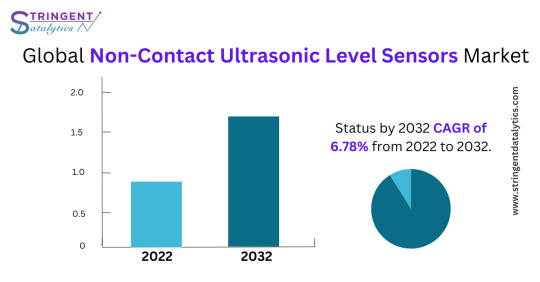
0 notes
Text
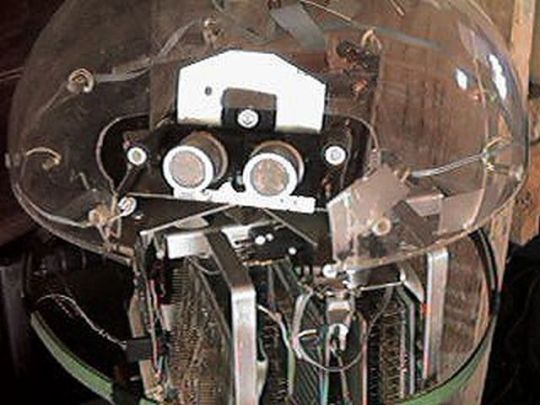
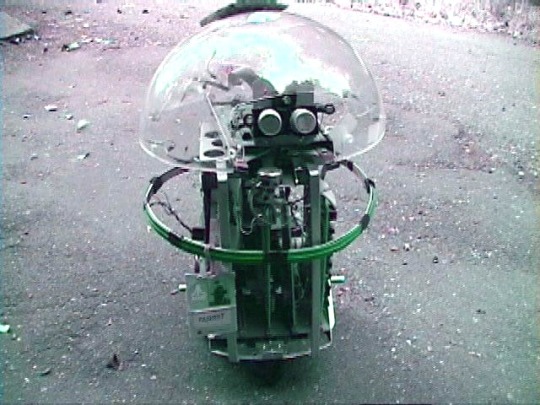
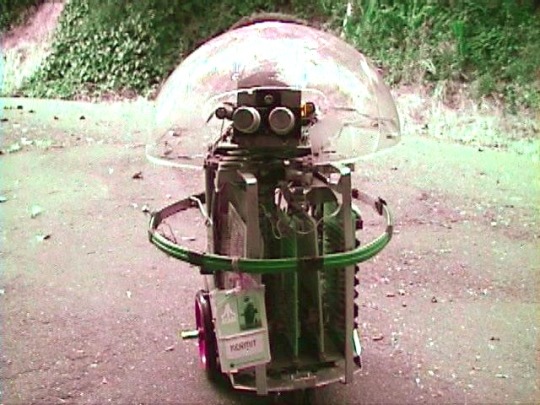
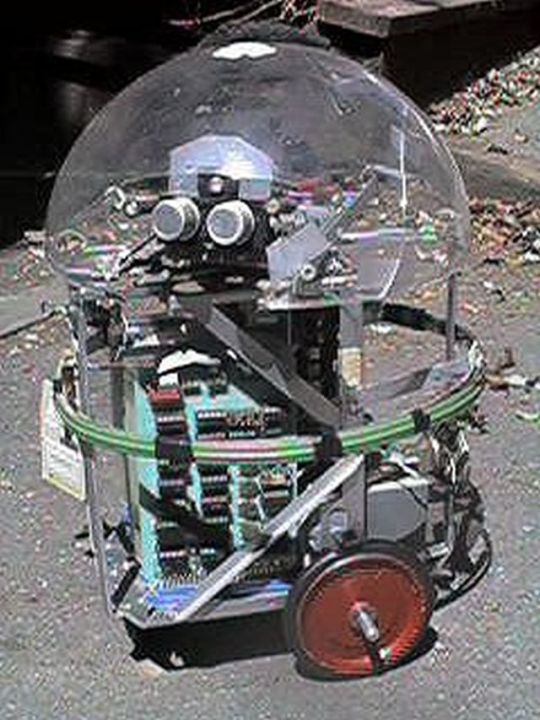
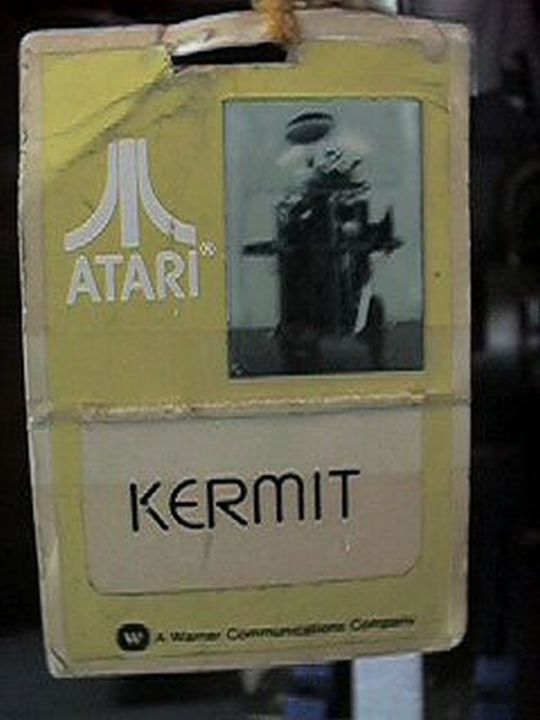
Kermit (1978), by Ron Milner and Larry Nicolson, Cyan Engineering, Atari's secret think tank in Grass Valley, CA.
"The robot was a pet project for Nolan Bushnell, then still the head of Atari and a very creative guy. Its purpose in life was as Nolan put it to "bring me a beer!" Navigation for robots was a sketchy thing at that time with lots of pioneering work at MIT but no consumer cost ideas. Nolan brought us the incredibly original idea to navigate a robot (which mostly meant knowing where it was) by means of scanning bar codes attached here and there to the baseboards in the rooms the robot was to service. Why it wasn't patented I don't know.
I had lots of fun building the R2D2 style robot about 20" tall. I liked to put mechanical and electronic things together and we had a great shop at Cyan. Its brain was one of the 6502 based single board computers-I think it was a KIM but not sure. Locomotion was two DC gear motor driven wheels and an instrumented caster-about the same rig as a modern Roomba. A rotatable turret covered with a plexiglass dome carried microphones, an IR sensor to detect people, and ultrasonic ranging sensors I built on a separate PC board. A speaker so Kermit could beep gleefully, of course.
A ring of contact-detecting burglar alarm sensing tape (green in the pictures) around Kermit's middle told the software he had hit something and should back off. The ultrasonics provided range to obstacles and to some extent direction as the turret was rotated, so we could go around things.
My pride and joy was the barcode remote scanner which was mounted on the bottom of the robot so its rotating head would be level with the barcodes on the baseboards. It had a vertical telescope tube with a beam splitter between the IR Led and the photodiode sensor and a lens to focus 2-20' away. It aimed down at a front surface mirror at 45 degree to scan horizontally. The mirror was mounted on a motor driven turret so it spun around continuously with a sensor once around to resolve the continuous angular position of the beam horizontally of course with respect to Kermit's rotational position. Unfortunately, this part of the robot did not survive the closing of our group. The barcodes I made for the prototype to detect were about 4" tall made of 3/4" reflective 3m tape on black poster board.
My programming partner on the project was Larry Nicholson, a really bright guy. He made the barcode reading work to detect not only the barcodes, but where they were angularly with respect to the robot and also their subtended angle or apparent size (all from timing of the rotation of the scanner) which was a measure of distance combined with angle from the barcode. We worked out some pretty clever math to resolve that information from two or three of the barcodes into a position and orientation of Kermit in the room. We had rented an empty room upstairs on the third floor of the Litton building to try all this out and work out the navigation. Larry and I got the basic navigation and obstacle avoidance working so Kermit could go from one place to a designated other place in the room and avoid wastebaskets placed randomly. We demonstrated it to Nolan and he was impressed.
Shortly thereafter Warner Communication who had bought Atari from Nolan kicked him out and the Kermit project was cancelled."
– Kermit The Robot Notes by Ron Milner.
65 notes
·
View notes
Note
How'd the Arduino build go? I couldn't finish the stream 😭. Also, I couldn't tell but how big was the joystick? 🕹️
the arduino build was fun! i managed to get the LEDs to work but i've forgotten how to configure a breadboard...
i fiddled with some equipment yesterday!



a water level sensor, which was easy to setup, then an ultrasonic sensor which i think might be faulty because it always returned the same values to me. finally, i tried the humidity and temp sensors and they worked fine! it's been really fun working with the arduino so far :3 i'm trying to build a plant monitor as a first project (something that's been done a thousand times already!) so i'm excited!
i'll reblog this with a picture of the joystick once i get to it..... gimme a min
6 notes
·
View notes
Text

NASA scientific balloon flights to lift off from Antarctica
NASA's Scientific Balloon Program has returned to Antarctica's icy expanse to kick off the annual Antarctic Long-Duration Balloon Campaign, where two balloon flights will carry a total of nine missions to near space. Launch operations will begin mid-December from the agency's Long Duration Balloon camp located near the U.S. National Science Foundation's McMurdo Station on the Ross Ice Shelf.
"Antarctica is our cornerstone location for long-duration balloon missions, and we always look forward to heading back to 'the ice,'" said Andrew Hamilton, acting chief of NASA's Balloon Program Office at the agency's Wallops Flight Facility in Virginia. "It's a tremendous effort to stage a campaign like this in such a remote location, and we are grateful for the support provided to us by the U.S. National Science Foundation, New Zealand, and the U.S. Air Force."
This year's Antarctic campaign includes investigations in astrophysics, space biology, heliospheric research, and upper atmospheric research, along with technology demonstrations. The campaign's two primary missions include:
GAPS (General Anti-Particle Spectrometer), led by Columbia University in New York, is an experiment to detect anti-matter particles produced by dark matter interactions. The anti-particles stemming from these interactions in our galaxy can only be observed from a suborbital platform or in space, since Earth's atmosphere shields us from the cosmic radiation. GAPS aims to provide an unprecedented level of sensitivity to certain classes of anti-particles, allowing the exploration of a currently unexplored energy regime of the elusive dark matter.
Salter Test Flight Universal, led by NASA's Columbia Scientific Balloon Facility in Palestine, Texas, will test and validate long-duration balloon and subsystems, while supporting several piggyback missions on the flight.
Piggyback missions, or smaller payloads, riding along with the Salter Test Flight Universal mission include:
MARSBOx (Microbes in Atmosphere for Radiation, Survival, and Biological Outcomes Experiments), led by the U.S. Naval Research Laboratory, will expose melanized fungus, called Aspergillus niger, to the stratosphere's extreme radiation and temperature fluctuations, low atmospheric pressure, and absence of water—conditions much like the surface of Mars. Knowledge of how this fungus adapts to protect itself in this harsh environment could lead to the development of treatments to protect astronauts from high radiation exposure.
EMIDSS-6 (Experimental Module for Iterative Design of Satellite Subsystems 6), led by National Polytechnical Institute − Mexico, is a technological platform with experimental design and operational validation of instrumentation that will collect and store data from the stratospheric environment to contribute to the study of climate change.
SPARROW-6 (Sensor Package for Attitude, Rotation, and Relative Observable Winds—6), led by NASA's Balloon Program Office at NASA Wallops, will demonstrate relative wind measurements using an ultrasonic anemometer designed for the balloon float environment.
WALRUSS (Wallops Atmospheric Light Radiation and Ultraviolet Spectrum Sensor), led by the Balloon Program Office at NASA Wallops, is a technology demonstration of a sensor package capable of measuring the total ultraviolet wavelength spectrum and ozone concentration.
INDIGO (INterim Dynamics Instrumentation for Gondolas), led by the Balloon Program Office at NASA Wallops, is a data recorder meant to measure the shock, rotation, and attitude of the gondola during the launch, float, and landing phases of flight. Data will be used to improve understanding of the dynamics of flight and to inform the design of future components and hardware.
The remaining two piggyback missions are led by finalists of NASA's FLOATing DRAGON (Formulate, Lift, Observe, And Testing; Data Recovery And Guided On-board Node) Balloon Challenge, sponsored by the Balloon Program Office at NASA Wallops and managed by the National Institute of Aerospace.
The challenge was created for student teams to design, build, and fly an autonomous aerial vehicle, deployed from a gondola during a high-altitude balloon flight. The teams' student-built data vaults will be safely dropped from around 120,000 feet with the capability to target a specific landing point on the ground to manage risk. The missions participating in the Antarctic campaign are Purdue University's Purdue DRAGONfly, and University of Notre Dame's IRIS v3.
NASA's zero-pressure balloons, used in the Antarctic campaign, are made of a thin plastic film and are capable of lifting up to 8,000 pounds of payload and equipment to altitudes above 99.8% of Earth's atmosphere. Zero-pressure balloons, which typically have a shorter flight duration from the loss of gas during the day-to-night cycle, can support long-duration missions in polar regions during summer.
The constant daylight of Antarctica's austral summer and stable stratospheric wind conditions allow the balloon missions to remain in near space for days to weeks, gathering large amounts of scientific data as they circle the continent.
TOP IMAGE: A scientific balloon is inflated during NASA’s 2023 Antarctic campaign in McMurdo, Antarctica. Credit: NASA/Scott Battaion
LOWER IMAGE: NASA’s Long Duration Balloon camp is located about eight miles from the U.S. National Science Foundation’s McMurdo Station on Antarctica’s Ross Ice Shelf. Credit: NASA/Scott Battaion

4 notes
·
View notes
Text
BEST BRANDS WE ARE DEALING WITH
In Ov mobiles, we specialise in a comprehensive range of mobile services to meet the needs of our customer, dealing with most popular mobile phones based on Thoothukudi ,our offering includes chip level repairs en compassing both Hardware and Software Solutions such as PIN an FRP unlocks. With ensure precision and versatility in customizing mobile accessories and components.
POPULAR PHONES IN INDIA IN 2024
iPhone 16 Pro max
Samsung Galaxy S24 Ultra
iPhone 16
Google pixel 9
Galaxy S24 Ultra
OnePlus Open
Samsung Galaxy Z flip 6
Galaxy S24
Google Pixel 9 Pro
iPhone 14
iPhone 16Pro max
iPhone 16 pro
Galaxy A25 5G
Asus ROG phone 8 Pro
One Plus
Redmi Note 13
We are specially dealing with
Galaxy S 24
Iphone16
Google pixel 9pro
TOP BRAND PHONE IN THOOTHUKUDI
Galaxy S24
The Galaxy S24 series features a "Dynamic AMOLED 2X" display with HDR10+ support, 2600 nits of peak brightness, LTPO and "dynamic tone mapping" technology. we ov mobiles offer u all models use an ultrasonic in-screen fingerprint sensor. The S24 series uses a variable refresh rate display with a range of 1 Hz or 24 Hz to 120 Hz The Galaxy S24 Series introduces advanced intelligence settings, giving you control over AI processing for enhanced functionality. Rest easy with unparalleled mobile protection, fortified by the impenetrable Knox Vault, as well as Knox Matrix13, Samsung's vision for multi-device security. The Galaxy S24 Series is also water and dust resistant, with all three phones featuring an IP68 rating10, so you can enjoy a phone that is able to withstand the demands of your everyday life! definitely this phone will crack the needs of the people in and around thoothukudi.
THE MOST FAVOURITE MOBILE PHONE IN INDIA
Iphone16
The new A18 chip delivers a huge leap in performance and efficiency, enabling demanding AAA games, as well as a big boost in battery life. Available in 6.1-inch and 6.7-inch display sizes, iPhone 16 and iPhone 16 Plus feature a gorgeous, durable design and offer a big boost in battery life. Apple has confirmed that the new iPhone 16 and iPhone 16 Plus models are equipped with 8GB RAM, an upgrade from the 6GB RAM in last year's base models. Johny Srouji, Apple's senior vice president of hardware technologies,
How long does the iPhone 16 battery last? Battery size Battery life (Hrs:Mins) iPhone 16 3,561 mAh 12:43 iPhone 16 Plus 4,674 mAh 16:29 iPhone 16 Pro 3,582 mAh 14:07 iPhone 16 Pro Max 4,685 mAh 17:35 The iPhone is a smartphone made by Apple that combines a computer, iPod, digital camera and cellular phone into one device with a touchscreen interface. iPhones are super popular because they're easy to use, work well with other Apple gadgets, and keep your stuff safe. They also take great pictures, have cool features, and hold their value over time. iOS devices benefit from regular and timely software updates, ensuring that users have access to the latest features and security enhancements. This is in contrast to Android, where the availability of updates varies among manufacturers and models in ov mobiles.
FUTURE ULTIMATE PHONE PEOPLE THINK
Google pixel 9pro
The Google Pixel 9 Pro is the new kid on the block in this year's lineup. The Pixel 8 Pro was succeeded by the Google Pixel 9 Pro XL and the 9 Pro is a new addition to the portfolio - it is a compact, full-featured flagship with all of the bells and whistles of its bigger XL sibling
A compact Pixel is not a new concept in itself, of course, but this is the first time Google is bringing the entirety of its A-game to this form factor. The Pixel 9 Pro packs a 48MP, 5x optical periscope telephoto camera - the same as the Pixel 9 Pro XL. There is also UWB onboard the Pixel 9 Pro. Frankly, it's kind of amazing that Google managed to fit so much extra hardware inside what is essentially the same footprint as the non-Pro Pixel 9.
Google Pixel 9 Pro specs at a glance: Body: 152.8x72.0x8.5mm, 199g; Glass front (Gorilla Glass Victus 2), glass back (Gorilla Glass Victus 2), aluminum frame; IP68 dust/water resistant (up to 1.5m for 30 min). Display: 6.30" LTPO OLED, 120Hz, HDR10+, 2000 nits (HBM), 3000 nits (peak), 1280x2856px resolution, 20.08:9 aspect ratio, 495ppi; Always-on display. Chipset: Google Tensor G4 (4 nm): Octa-core (1x3.1 GHz Cortex-X4 & 3x2.6 GHz Cortex-A720 & 4x1.92 GHz Cortex-A520); Mali-G715 MC7. Memory: 128GB 16GB RAM, 256GB 16GB RAM, 512GB 16GB RAM, 1TB 16GB RAM; UFS 3.1. OS/Software: Android 14, up to 7 major Android upgrades. Rear camera: Wide (main): 50 MP, f/1.7, 25mm, 1/1.31", 1.2µm, dual pixel PDAF, OIS; Telephoto: 48 MP, f/2.8, 113mm, 1/2.55", dual pixel PDAF, OIS, 5x optical zoom; Ultra wide angle: 48 MP, f/1.7, 123-degree, 1/2.55", dual pixel PDAF. Front camera: 42 MP, f/2.2, 17mm (ultrawide), PDAF. Video capture: Rear camera: 8K@30fps, 4K@24/30/60fps, 1080p@24/30/60/120/240fps; gyro-EIS, OIS, 10-bit HDR; Front camera: 4K@30/60fps, 1080p@30/60fps. Battery: 4700mAh; 27W wired, PD3.0, PPS, 55% in 30 min (advertised), 21W wireless (w/ Pixel Stand), 12W wireless (w/ Qi-compatible charger), Reverse wireless. Connectivity: 5G; eSIM; Wi-Fi 7; BT 5.3, aptX HD; NFC. Misc: Fingerprint reader (under display, ultrasonic); stereo speakers; Ultra Wideband (UWB) support, Satellite SOS service, Circle to Search. Google also paid some extra attention to the display of the Pro. It is a bit bigger than the Pixel 8's and better than that inside the regular Pixel 9. The resolution has been upgraded to 1280 x 2856 pixels, the maximum brightness has been improved, and there is LTPO tech for dynamic refresh rate adjustment.
WHY YOU SHOULD CHOOSE OV MOBILES?
you need to choose us because of our great deals and offers which we provide for our customer especially in festival time our offers really attract you without fail. Agreat opportunity in Ov mobiles is when u purchase from our shop in any of the product, we offer you a great percentage of discounts for your next purchase of any models
3 notes
·
View notes
Text
Discover Accurate Water Level Monitoring with a Durable Water Level Staff Gauge
Require an accurate and budget-friendly way of measuring water levels? The Water Level Staff Gauge is the best bet! Built for its durability and fast readability, this gauge provides accurate readings for reservoirs, rivers, tanks, and canals. Its bold, clear markings ensure you exact measurements even in challenging conditions. It's your first choice when working with irrigation, flood control, or environmental monitoring. Simple to install and almost maintenance-free, it delivers lasting results at a reduced cost. Find out more about the water level staff gauge at Nikeson and make the most of your water management today!
#ultrasonic level sensor#Ultrasonic Level Transmitter#water level gauge#water level staff gauge#water tank level indicator#tank level staff gauge#tank level gauge#water tank gauge#level indicators for water tanks#rainwater level indicator#water level indicators for water tanks
0 notes
Text
Top 10 Projects for BE Electrical Engineering Students
Embarking on a Bachelor of Engineering (BE) in Electrical Engineering opens up a world of innovation and creativity. One of the best ways to apply theoretical knowledge is through practical projects that not only enhance your skills but also boost your resume. Here are the top 10 projects for BE Electrical Engineering students, designed to challenge you and showcase your talents.
1. Smart Home Automation System
Overview: Develop a system that allows users to control home appliances remotely using a smartphone app or voice commands.
Key Components:
Microcontroller (Arduino or Raspberry Pi)
Wi-Fi or Bluetooth module
Sensors (temperature, motion, light)
Learning Outcome: Understand IoT concepts and the integration of hardware and software.
2. Solar Power Generation System
Overview: Create a solar panel system that converts sunlight into electricity, suitable for powering small devices or homes.
Key Components:
Solar panels
Charge controller
Inverter
Battery storage
Learning Outcome: Gain insights into renewable energy sources and energy conversion.
3. Automated Irrigation System
Overview: Design a system that automates the watering of plants based on soil moisture levels.
Key Components:
Soil moisture sensor
Water pump
Microcontroller
Relay module
Learning Outcome: Learn about sensor integration and automation in agriculture.
4. Electric Vehicle Charging Station
Overview: Build a prototype for an electric vehicle (EV) charging station that monitors and controls charging processes.
Key Components:
Power electronics (rectifier, inverter)
Microcontroller
LCD display
Safety features (fuses, circuit breakers)
Learning Outcome: Explore the fundamentals of electric vehicles and charging technologies.
5. Gesture-Controlled Robot
Overview: Develop a robot that can be controlled using hand gestures via sensors or cameras.
Key Components:
Microcontroller (Arduino)
Motors and wheels
Ultrasonic or infrared sensors
Gesture recognition module
Learning Outcome: Understand robotics, programming, and sensor technologies.
6. Power Factor Correction System
Overview: Create a system that improves the power factor in electrical circuits to enhance efficiency.
Key Components:
Capacitors
Microcontroller
Current and voltage sensors
Relay for switching
Learning Outcome: Learn about power quality and its importance in electrical systems.
7. Wireless Power Transmission
Overview: Experiment with transmitting power wirelessly over short distances.
Key Components:
Resonant inductive coupling setup
Power source
Load (LED, small motor)
Learning Outcome: Explore concepts of electromagnetic fields and energy transfer.
8. Voice-Controlled Home Assistant
Overview: Build a home assistant that can respond to voice commands to control devices or provide information.
Key Components:
Microcontroller (Raspberry Pi preferred)
Voice recognition module
Wi-Fi module
Connected devices (lights, speakers)
Learning Outcome: Gain experience in natural language processing and AI integration.
9. Traffic Light Control System Using Microcontroller
Overview: Design a smart traffic light system that optimizes traffic flow based on real-time data.
Key Components:
Microcontroller (Arduino)
LED lights
Sensors (for vehicle detection)
Timer module
Learning Outcome: Understand traffic management systems and embedded programming.
10. Data Acquisition System
Overview: Develop a system that collects and analyzes data from various sensors (temperature, humidity, etc.).
Key Components:
Microcontroller (Arduino or Raspberry Pi)
Multiple sensors
Data logging software
Display (LCD or web interface)
Learning Outcome: Learn about data collection, processing, and analysis.
Conclusion
Engaging in these projects not only enhances your practical skills but also reinforces your theoretical knowledge. Whether you aim to develop sustainable technologies, innovate in robotics, or contribute to smart cities, these projects can serve as stepping stones in your journey as an electrical engineer. Choose a project that aligns with your interests, and don’t hesitate to seek guidance from your professors and peers. Happy engineering!
5 notes
·
View notes
Text
Robotics Project Ideas for All Skill Levels: From Beginner to Advanced
Beginner Projects
Line Following Robot
Description: A robot that follows a pre-defined path marked by a line on the floor. The line can be of any color, but black on a white background is commonly used.
Components: Microcontroller (like Arduino), IR sensors, DC motors, motor driver, chassis, wheels.
Learning Outcomes: Basic electronics, sensor integration, and motor control.
Obstacle Avoidance Robot
Description: A robot designed to navigate its environment and avoid obstacles. It uses sensors to detect objects in its path and changes direction to avoid collisions.
Components: Ultrasonic sensors, microcontroller, motors, motor driver, chassis, wheels.
Learning Outcomes: Understanding of sensor data processing, basic programming, and control systems.
Bluetooth-Controlled Robot
Description: A robot that can be controlled via a smartphone or other Bluetooth-enabled devices. Commands are sent wirelessly to move the robot in different directions.
Components: Bluetooth module, microcontroller, motors, motor driver, chassis, wheels.
Learning Outcomes: Wireless communication, mobile app development, microcontroller programming.
Voice-Controlled Robot
Description: A robot that responds to voice commands, allowing you to control its movements through spoken instructions.
Components: Microphone, speech recognition module, microcontroller, motors, motor driver, chassis, wheels.
Learning Outcomes: Introduction to speech recognition, interfacing sensors, and control mechanisms.
Light Following Robot
Description: A robot that follows a light source. It can be used to follow a flashlight or navigate toward a lighted area.
Components: Light sensors, microcontroller, motors, motor driver, chassis, wheels.
Learning Outcomes: Sensor integration, basic electronics, programming.
Before next read this Robotic Revolution
Intermediate Projects
Self-Balancing Robot
Description: A robot that maintains its balance on two wheels, similar to a Segway. It uses sensors to detect its tilt and adjusts the motors to stay upright.
Components: Gyroscope, accelerometer, microcontroller, motors, motor driver, wheels.
Learning Outcomes: Understanding of feedback control systems, sensor fusion, and motor control.
Robotic Arm
Description: A robotic arm capable of performing simple tasks like picking and placing objects. It can be controlled manually or programmed to follow a sequence of movements.
Components: Servo motors, microcontroller, various sensors (like pressure or touch), structural components.
Learning Outcomes: Kinematics, servo control, programming for sequential tasks.
Maze-Solving Robot
Description: A robot that can navigate through a maze and find the exit. It uses algorithms to decide the best path and avoid dead ends.
Components: IR or ultrasonic sensors, microcontroller, motors, motor driver, chassis, wheels.
Learning Outcomes: Algorithm implementation, sensor data interpretation, navigation strategies.
Remote-Controlled Spy Robot
Description: A small robot equipped with a camera that can be controlled remotely to explore and send live video feed.
Components: Wireless camera, microcontroller, motors, motor driver, chassis, wheels, remote control.
Learning Outcomes: Wireless video transmission, remote control systems, motor and sensor integration.
Line Following Robot with Obstacle Detection
Description: A robot that not only follows a line but also detects and avoids obstacles on its path. It combines line following and obstacle avoidance features.
Components: IR sensors, ultrasonic sensors, microcontroller, motors, motor driver, chassis, wheels.
Learning Outcomes: Integration of multiple sensor data, complex programming logic, advanced control systems.
Advanced Projects
Humanoid Robot
Description: A robot designed to resemble a human body. It can perform tasks like walking, speaking, and interacting with its environment.
Components: Servo motors, microcontroller, sensors (accelerometer, gyroscope), structural components.
Learning Outcomes: Advanced kinematics, complex control algorithms, humanoid robotics.
Autonomous Delivery Robot
Description: A robot that can autonomously navigate to deliver packages within a designated area. It uses GPS and other sensors to determine its location and avoid obstacles.
Components: GPS module, ultrasonic sensors, camera, microcontroller, motors, motor driver, chassis, wheels.
Learning Outcomes: Autonomous navigation, path planning, integration of multiple sensors.
Robotic Exoskeleton
Description: A wearable robotic suit that can assist with movement, enhancing the strength and endurance of the user.
Components: Servo motors, sensors (like pressure, motion), microcontroller, structural components.
Learning Outcomes: Biomechanics, actuator control, wearable robotics.
Quadruped Robot
Description: A four-legged robot capable of walking, running, and navigating various terrains. It mimics the movement of animals like dogs or cats.
Components: Servo motors, microcontroller, sensors (accelerometer, gyroscope), structural components.
Learning Outcomes: Gait analysis, dynamic stability, complex movement programming.
Swarm Robotics
Description: A group of small robots that work together to complete tasks. They communicate and coordinate to achieve goals like collective exploration or object transport.
Components: Multiple small robots, communication modules, microcontroller, various sensors.
Learning Outcomes: Distributed systems, communication protocols, cooperative robotics.
2 notes
·
View notes
Text
Services offered by well -measurement companies in Northern Georgia
If you are considering buying or selling a house with a well in North Georgia, it is necessary to understand the importance of tests of water level and the services provided by the well measurement companies. These services play an important role in ensuring protection, reliability and stability in the water supply.
Why the water level tests well is important
Well -watt testing is important for both home builders and suppliers. For those who buy a house with a well, a well -measured company tested a complete test and provides a detailed report that can give you confidence in the protection and reliability of water supply. This information is important to make an informed decision and to ensure that your new house has a reliable water source. For domestic suppliers, newer water quality reports and maintenance registers can trust potential buyers and make your property more desirable. Before you behave your property, you can complete a complete water testing and well inspection, help identify and correct any problem, and make sure your well is safe and reliable.
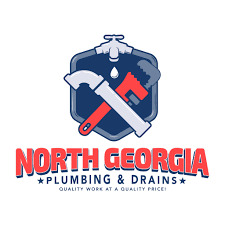
Well measured services provided by companies
Accurate measurement of the water levels
Companies such as Pinnacle Well Measuring Solution use condition -Eart -art echoostorm and sound wave techniques to provide accurate and reliable data on the water levels well. This advanced technology ensures that the measurements are accurate and non-invasive, reduce the risk of pollution and retain the quality of the water supply.
Contaminated warranty test
One of the biggest benefits of using a professional well measurement company is a guarantee of contaminated testing. Methods for non-Gussti of Pinnacle ensure that no physical or biological contaminated materials enter the water supply during the test process. This means that your well is clean and chemically free, which is the maximum benefit of your natural water source.
Comprehensive report
After completing the tests, well -measured companies provide a detailed and comprehensive report that gives you complete information on the position and performance of your well. These reports can be invaluable for both buyers and suppliers, as they give a clear picture of wells and any problems.
Regular Monitoring
For ongoing peace of mind, many companies offer regular monitoring services to ensure that your well continues to perform optimally. This can be especially important in North Georgia, where seasonal changes and other factors can cause fluctuations in water levels. Regular monitoring allows any changes in water level or quality to be detected early, so corrective measures can be taken promptly.
Customized Solutions
Well measurement companies in North Georgia understand the unique needs of their clients and provide customized solutions to meet those needs. Whether you are buying or selling a home with a well, these companies can tailor their services to ensure that your well water levels are accurately tracked and managed.
Benefits for Homebuyers and Sellers
For Homebuyers
When buying a home with a well, having a well measurement company conduct thorough tests and provide detailed reports can give you confidence in the safety and reliability of the water supply. This information is crucial for making an informed decision and ensuring that your new home has a dependable source of water.
For Home Sellers
For those selling a home with a well, having recent water quality reports and maintenance records can instill confidence in potential buyers and make your property more desirable. Completing a thorough water test and well inspection prior to listing your property can help identify and correct any issues, ensuring that your well water is safe and reliable.
Conclusion
In North Georgia, where well water is a vital resource for many residents, the services offered by well measurement companies are essential for ensuring the safety, reliability, and sustainability of this valuable resource. Whether you are buying or selling a home with a well, these companies provide the expertise and technology needed to accurately assess and manage well water levels. By choosing a reputable well measurement company, you can have peace of mind knowing that your well water is in good hands.
#north georgia well level testing#buying a home with a well#well water level sensor#selling a home with a well#well depth gauge#portable ultrasonic level sensor#company that measures well water levels
0 notes
Text
Ultrasonic Sensors: A Comprehensive Guide
Ultrasonic sensors are devices that use ultrasonic waves, which are sound waves with frequencies higher than the audible range for humans (typically above 20,000 hertz), for various applications.
These sensors operate on the principle of sending out ultrasonic waves and measuring the time it takes for the waves to bounce back after hitting an object. This information can then be used to determine the distance or presence of the object.
Ultrasonic Sensors Working Principle
The working principle of ultrasonic sensors is based on the transmission and reception of ultrasonic waves. Here’s a step-by-step explanation of how these sensors operate:
Generation of Ultrasonic Waves:
Ultrasonic sensors consist of a transducer, typically a piezoelectric crystal, that can convert electrical energy into ultrasonic waves. When an electrical voltage is applied to the crystal, it vibrates and generates ultrasonic waves in the frequency range beyond human hearing (typically above 20,000 hertz).
Wave Emission:
The ultrasonic sensor emits a short burst of ultrasonic waves into the surrounding environment. This burst of waves travels outward from the sensor.
Wave Propagation:
The ultrasonic waves move through the air until they encounter an object in their path. The waves continue to propagate until they hit a surface.
Reflection of Ultrasonic Waves:
When the ultrasonic waves strike an object, they are reflected back towards the sensor. The reflection occurs because the ultrasonic waves encounter a change in the medium (from air to the object’s surface), causing the waves to bounce back.
Reception of Reflected Waves:
The same transducer that emitted the ultrasonic waves now acts as a receiver. It detects the reflected waves returning from the object.
Time Measurement:
The sensor measures the time it takes for the ultrasonic waves to travel from the sensor to the object and back. This time measurement is crucial for determining the distance to the object.
Distance Calculation:
Using the known speed of sound in the air, which is approximately 343 meters per second (at room temperature), the sensor calculates the distance to the object. The formula for distance (D) is given by D = (Speed of Sound × Time) / 2.
Output Signal:
The calculated distance information is then processed by the sensor’s electronics, and the output is provided in a suitable format, often as an analog voltage, digital signal, or distance reading.
These sensors work by emitting ultrasonic waves, detecting their reflections from objects, measuring the time taken for the round trip, and using this time information to calculate the distance to the objects in their detection range. This working principle is fundamental to various applications, including distance measurement, object detection, and obstacle avoidance.
Ultrasonic Sensors Pins Configurations
The pin configurations of ultrasonic sensors may vary depending on the specific model and manufacturer. However, We will discuss general overview of the typical pin configuration for a commonly used ultrasonic sensor module, like the HC-SR04. This module is widely used in hobbyist and educational projects.
The HC-SR04 ultrasonic sensor typically has four pins:
VCC (Voltage Supply):
This pin is used to provide power to the sensor. It typically requires a voltage in the range of 5V.
Trig (Trigger):
The Trig pin is used to trigger the start of the ultrasonic pulse. When a pulse of at least 10 microseconds is applied to this pin, the sensor emits an ultrasonic wave.
Echo:
The Echo pin is used to receive the ultrasonic waves that are reflected back from an object. The duration of the pulse received on this pin is proportional to the time it takes for the ultrasonic waves to travel to the object and back.
GND (Ground):
This pin is connected to the ground (0V) of the power supply.
Read More: Ultrasonic Sensors
#ultrasonic sensors#ultrasonic technology#sensor technology#sensor applications#non-contact measurement#distance measurement#level measurement#flow measurement#object detection#obstacle avoidance#industrial automation#automotive industry#robotics#healthcare#home automation#smart homes#IoT#internet of things#technology#innovation#engineering#science#research#development#education#learning#acoustics#sound waves#frequency#amplitude
0 notes